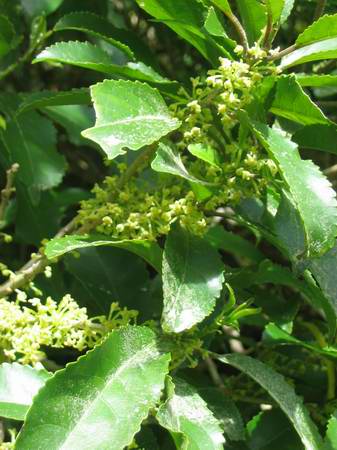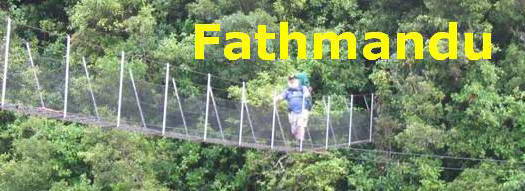We carry on down the hill. There are a couple of places where trees have come down across the track and over some months walkers have tramped a detour around them, but I noticed recently that a chainsaw crew had been through the track, clearing away debris. Well, sort of...
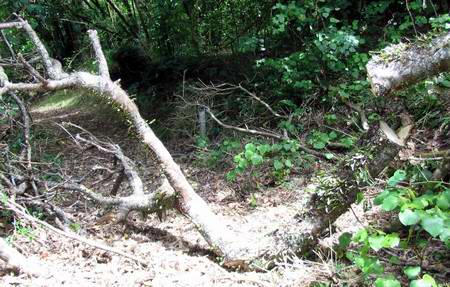
Shortly we reach another lookout beside a big puriri tree. The holes in the trunk are bored in it by the larvae of the puriri moth - a very large pale green moth. While the larva is in residence - over a number of years - the hole is typically sealed, and almost invisible, then one day we come past and the holes are all open and in each is a dried, empty, pupal case.
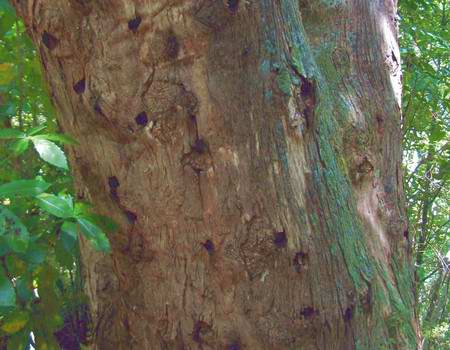
The view down the coast is fine but I suspect it will not translate to camera without a strong easterly wind taking all the sea mist out to sea. We've had several tries.
The Lookout sign is from an earlier Forest Service age when trampers routinely carried telescopes.
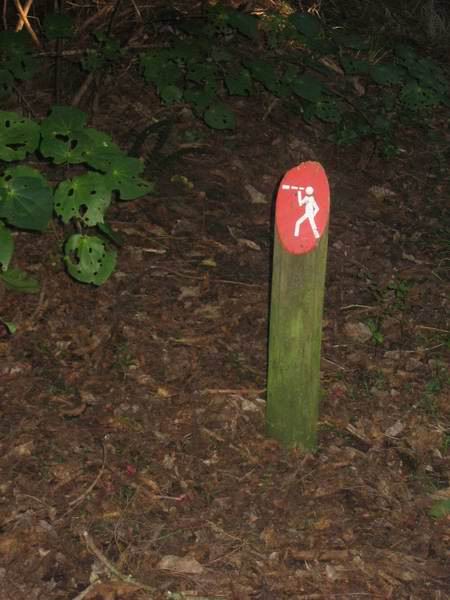
Just nearby, below the path, are some young nikau palms. This is the only spot I've found them in the entire reserve, and given, first, that they are a predominant part of the west coast bush in the South Island, right next door to the coast, and, second, that they are a major feature in the regenerating bush on Mt Auckland just a few kilometres north, and in the Waitakeres, I wonder why they do not feature more prominently here.
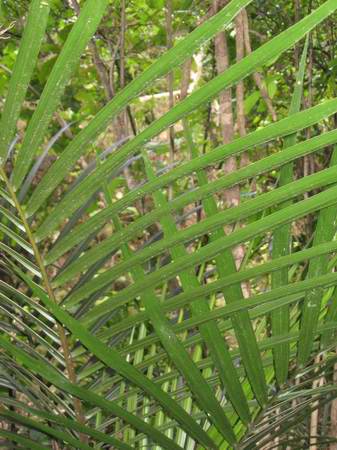
The path down the hill is terminated abruptly by a short wooden fence and a No Admittance sign. I suspect this is because the territory beyond is hunters territory these days. A large sign points to the right and to "Rangitira Beach".
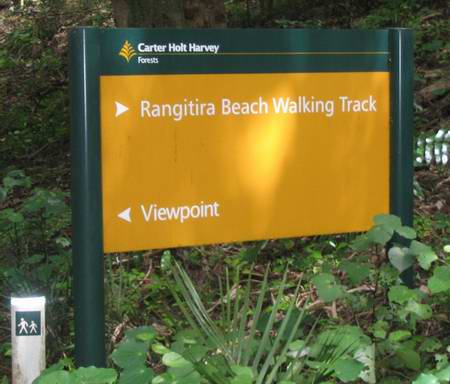
This is the name for the local piece of west coast beach. It's also miles away. There's nothing here about a short loop track and we figured the first time we saw it that we must have missed a turnoff somewhere. We certainly didn't want to go all the way to the coast. The CHH map wasn't a lot of help, and the walking track does not feature on the topo map. Eventually we returned to explore some more with a bit more time under our belt.
For the next 20 or 30 minutes the track is narrower, and much more undulating.
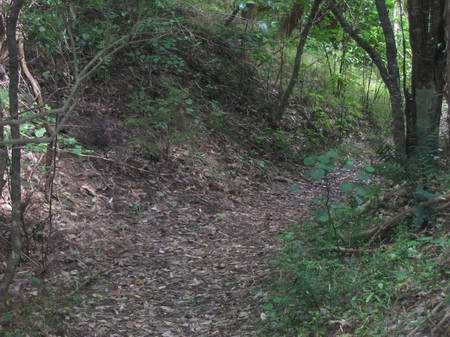
In season, look out for some magnificent kowhai trees in full bloom. The trees at this end of the reserve are in general much larger. Here are a couple of kanuka more than a foot across. Kanuka can live for several hundred years. Manuka generally finish at about 60-80 years.

Also a feature at this end of the track are large rewarewa, which provide the predominant canopy. Young kohekohe, kawakawa, and rangiora are everywhere along the track.
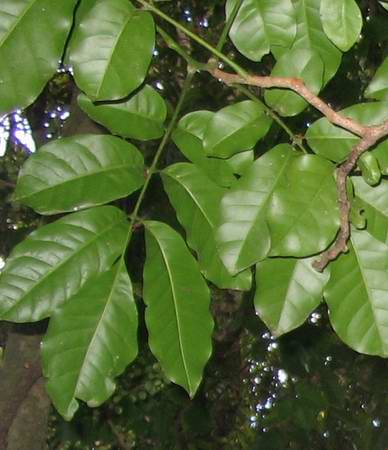
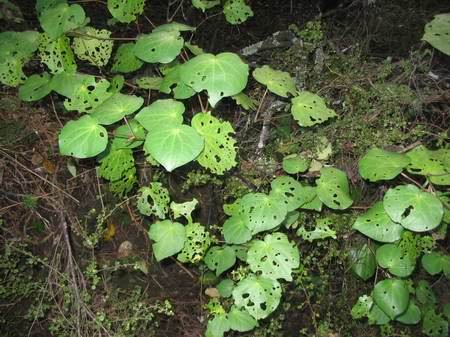
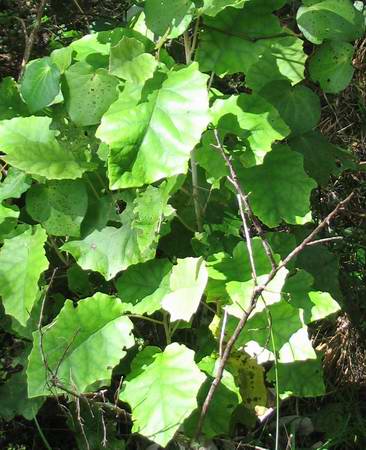
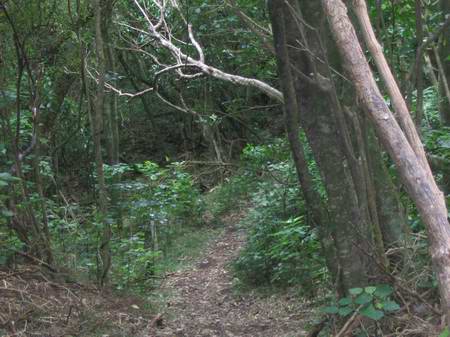
and as we move around towards the west we see our first examples of Coprosma australis, nearly all very young specimens as far as I can see.
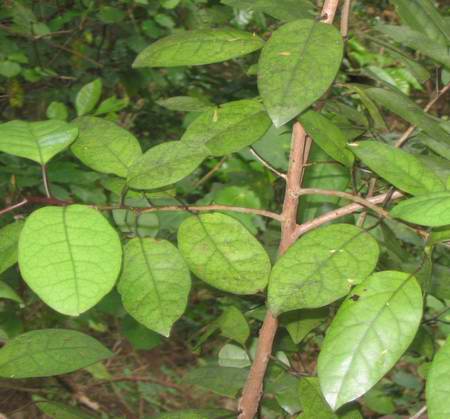
One of the features of Woodhill Forest is Kaihua, (Parsonsia heterophylla). It germinates readily, and is a more or less constant companion beside the track and especially under the pines where only a select band of native plants thrives.
As we begin to descend along an increasingly sandy track, it is possible in late November/early December to catch this vine in flower.
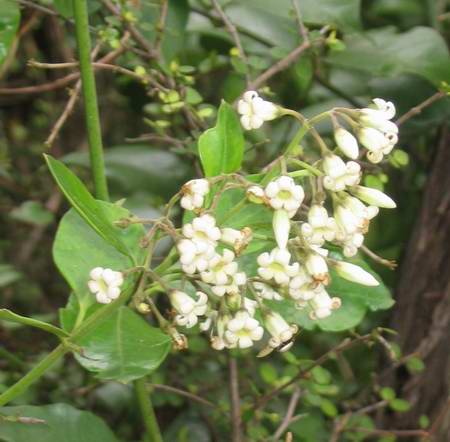
It is called the New Zealand Jasmine, but there was no appreciable scent that I could detect. It's most interesting feature is the enormous variability in its leaf shape from juvenile to adult.
As a juvenile, it emerges from the soil and goes hunting for something upright. Its leaves are long and narrow, and in pairs, which distinguishes it from the trifoliate clematis.
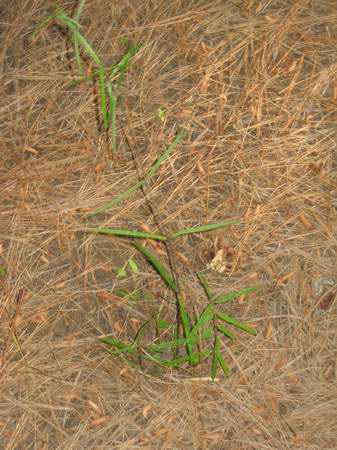
It climbs as far as it can then puts out a succession of horizontal branchlets which twine around each other, providing support for a groping tendril.
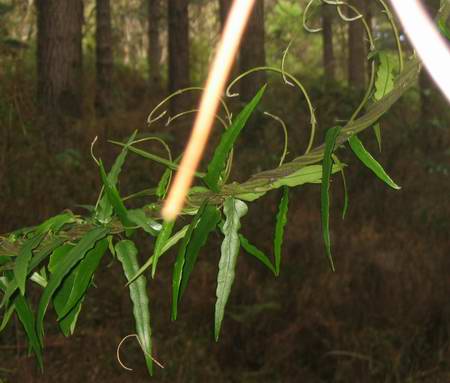
The pods are huge compared with the size of the flower.
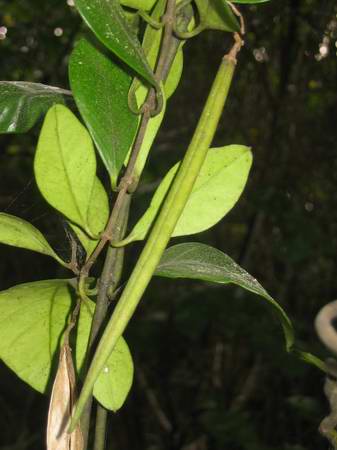
You can see in the above how the leaves have become rounder and shorter as the plant matures.
I would have to say though, that given the universal presence of young kaihua plants throughout Woodhill forest, I am surprised to see so little flower or seed on adult vines. Likewise clematis. Given the number of apparently thriving plants, very little flower.
The walking track ends in a stile which has been somewhat eroded and demands a certain agility. It's an OK place to stop for a cuppa, except when the mahoe right alongside it is in full bloom, when the strong odour of cats' urine can be overpowering.
